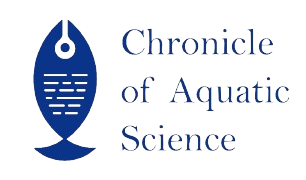| File | Action |
|---|---|
| CoAS_V1IS3_05 | Download |
- 919088951040 call us
- chronicleofaquaticscience@gmail.com Mail us
CoAS_V1IS3_05
Popular Article
Cage Culture in Indian Reservoirs
G. Ganesh* and N. Rajanna
Abstract
The yield of Indian reservoirs might be greatly increased through cage fish farming. According to the current study, over 14,000 cages have been put in various reservoirs across the nation, producing roughly 16% of the fish currently produced in reservoirs. In the nation, cage fish farming generates about 7.5 lakh man days of labor. According to an empirical research conducted in the state of Jharkhand, cage culture adoption helped fishers' livelihoods by about 30%. Cage culture decreased occupational migration while also raising monthly family income. Due to an increase in household income, the fishing families who adopted cage farming also gained some durable assets. However, according to the fishermen, some of the main obstacles to adopting the technology were the high initial cost of cage culture operations, the high cost of feed, and the low market price of cultured pangus fish (Pangasianodon hypophthalmus). According to the report, state agencies should encourage the use of inexpensive galvanized iron (GI) cages created by the ICAR-Central Inland Fisheries Research Institute (ICAR-CIFRI) in reservoirs since they may be crucial to realizing the nation's blue revolution vision.
Keywords
Cage fish farming, Livelihood, Pangasianodon hypophthalmus,Reservoir
References
Cage Farming Equipment. Badinotto group (1910) http/. www.badinotti.com
Das, A. K., Vass, K. K., Shrivastava, N. P., & Katiha, P. K. (2009). Cage culture in reservoirs in India (A Handbook). WorldFish.
Gunkel, G., Matta, E., Selge, F., Silva, G. M. N. D., & Sobral, M. D. C. (2015). Carrying capacity limits of net cage aquaculture in Brazilian reservoirs. Revista Brasileira de Ciências Ambientais, 36, 127-144.
Harada, T. (1970). The present status of marine fish cultivation research in Japan. Helgoland Marine Research, 20(1), 594-601. IOP Publishing. 10.1088/1742- 6596/1952/3/032023
Jenkins, R. M., & Oglesby, R. T. (1982). The morphoedaphic index—concepts and practices: The morphoedaphic index and reservoir fish production. Transactions of the American Fisheries Society, 111(2), 133- 140.https://doi.org/10.1577/1548- 86591982
Kumari, S., & Sharma, A. (2022). Sustainable livelihood through fish cage culture: Case of chandil reservoir in Jharkhand. Indian Journal of Ecology, 49(3), 879- 887.DOI10.55362/IJF/2022/3610
Masser, M. P. (2004). Cage culture. Oklahoma Cooperative Extension Service.
Mudgal, L. K. (2013). Comparative studies of physico-chemical parameters of two reservoirs of Narmada River, MP, India. Current World Environment, 8(3), 473. http://dx.doi.org/10.12944/CWE. 8.3.18
Pandit, A., Das, B. K., Chandra, G., Roy, A., Debroy, P., Yadav, A. K., ... & Biswas, D. K. (2021). Impact of cage culture in reservoir on the livelihood of fishers: A case study in Jharkhand, India. 10.21077/Ijf.2021.68.1.93390-09 Sajina, A. M., Sarkar, U. K., Canciyal, J., Das, B. K., Saha, A., Mishal, P., ... & Das, A. K. (2021). Influence of cage farming and environmental parameters on spatio-temporal variability of fish assemblage structure in a tropical reservoir of PeninsularIndia. Limnologica, 91,1259 25.https://doi.org/10.1016/j.limno.202 1.125925
Sarkar, U. K., Sandhya, K. M., Mishal, P., Karnatak, G., Lianthuamluaia, Kumari, S., & Das, B. K. (2018). Status, prospects, threats, and the way forward for sustainable management and enhancement of the tropical Indian reservoir fisheries: an overview. Reviews in Fisheries Science & Aquaculture, 26(2), 155-175. https://doi.org/10.1080/23308249.201 7.1373744
Sugnnan, V. V. (1995). Reservoir fisheries of India (Vol. 345). Daya Books.
Sugunan, V. V. (2000). Status of culture-based fisheries in small reservoirs in India. In ACIAR PROCEEDINGS (pp. 274- 280). ACIAR; 1998.
Yadav, R., Jayant, M., Surnar, S. R., Chadha, N. K., Saini, V. P., Sharma, B. K., ... & Yadav, R. Chapter-3 Advancements in Indian Aquafarming Systems with Special Reference to Cage and Pen. Latest trends in Fisheries and Aquatic Animal Health, 31.
- Published online
- 31st August, 2023
How to Cite the Article
Ganesh, G. and Rajanna, N. (2023). Cage Culture in Indian Reservoirs. Chronicle of Aquatic Science 1(3): 28-36
Copyright
This is an open-access article distributed under the terms of the Creative Commons Attribution License (CC BY). The use, distribution or reproduction in other forums is permitted, provided the original author(s) and the copyright owner(s) are credited and that the original publication in this journal is cited, in accordance with accepted academic practice. No use, distribution or reproduction is permitted which does not comply with these terms.

CoAS_V1IS3_05


